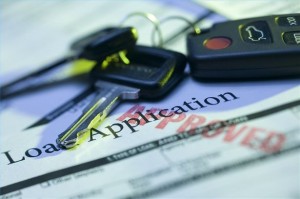Fleet Leasing
provides the option of giving employees a company car that he or she can use in order to work better and with more efficiency.
If your company is thinking of getting multiple cars, there are a lot of options for you to choose from. Obviously, the trick is to find the options that will provide the best overall effect on your budget. If you have quite a few cars, you may want to look into a vehicle fleet management system. Often, it is better to divide the cost and pay it on a monthly basis and be able to simply write off the expense on your taxes rather than having to amortize the price of the fleet over several years . Many leasing companies offer fleet leasing and they provide you with plenty of options so that you can tailor the terms so that they best suit your budget needs.
Just Over Half of All Company Fleets are Leased
Approximately 51% of all commercial vehicles in the United States are leased. Fleet leasing is similar to a long term rental or regular car lease but has some differences. As with a personal lease, under a fleet leasing contract, the company is not the owner of the car, the car is owned by the leasing company that is providing the leasing service. In other words, the leasing company (Lessor) rents the cars to the lessee for the term of the lease. However, the process of leasing a commercial vehicle is slightly different from leasing a personal car.
With a personal car lease, at the end of the lease term, the lessee has the option of buying the car or paying any mileage overage and returning the car to the lease company.
Fleet Leasing Process
Generally in a commercial fleet leasing situation the system is an open-end lease (meaning the company can keep the car as long as it wants). Open-end leases are similar to car ownership in that there are no monthly or annual mileage caps and the company shares in the gain or loss from the sale of the vehicle and can choose to keep the car longer than originally estimated. Planned vehicle cycling allows the company to maximize utility while minimizing maintenance costs and to order vehicles in advance, instead of buying them off the lot, so they can more accurately be tailored to the company’s individual automotive needs. But the major advantage is that instead of being a capital expenditure and thus requiring amortization on your tax return, a fleet leased vehicle is a monthly expense with a prearranged life-cycle.
At the Beginning of the Lease
At the beginning of an open-end lease, calculations are made to determine what the market value of the vehicle will be at the end of the useful life of the vehicle. This value is calculated on the expected use and wear and tear of the vehicle. The monthly payment is calculated to amortize the cost of the vehicle over the estimated length of the lease. But the company is actually able to use the car just as if it were their own in any manner they see fit, even if it exceeds the estimates.
At the End of the Lease
When the vehicle is determined to be in need of replacement, it is cycled with a new vehicle and the old vehicle is sold by the leasing company. If initial market predictions were correct, there is no additional expense. However, if the vehicle sells for less than originally estimated, that difference will have to be made up by the company, but unlike a personal lease, if the vehicle sells for more than expected, the business receives the difference.
Most leasing companies are partners with insurance and maintenance companies, so companies can arrange outsourcing their insurance, and all maintenance and repairs.
See Also:
Five Reasons Your Business Needs a Virtual Data Room
Current Trend to Virtual Offices
Author Bio: Ivan Dimitrijevic focus’ on finance blogging as well as social media marketing. He writes about various options for car financing. Among other things he had articles published that consider a wide range of topics that include business vehicle loans and car finance. He enjoys writing occasionally for finance companies like Aussie Loans. He is married, with a 4 year old daughter and he enjoys camping, entertaining, and spending time with family.

